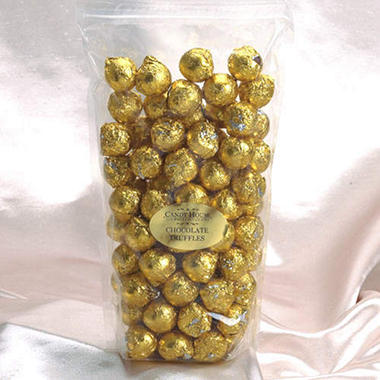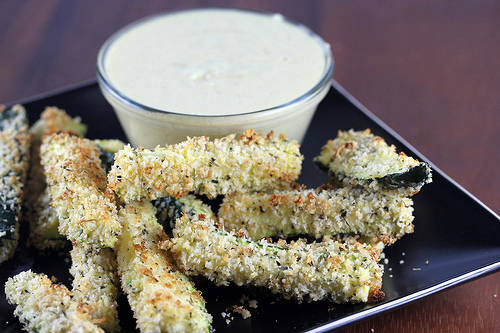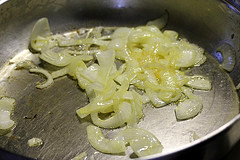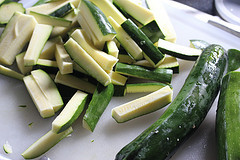Exert from mother nature news
How to Make Compost
Choose from the many easy ways to make compost for increased garden productivity: low-cost homemade bins, piles sans bins, chicken power, pest-proof tumblers — even indoor worm bins!
By Barbara Pleasant
October/November 2012
Compost is the ultimate ingredient for building fertile soil. If everyone composted their kitchen and garden waste, the world would be a cleaner place, and we would all enjoy more productive organic gardens. Some folks are intimidated by this unfamiliar and seemingly mysterious process — but have no fear! Composting is nothing more than guiding the natural process by which organic wastes decompose. You simply cannot do it wrong. The only challenge is finding sufficient organic materials to make enough black gold to sustain your garden.
Composting is
so worth the effort. Adding compost to your garden feeds the soil food web and provides a slow release of nutrients to your crops.
Compost also vastly improves soil structure, allows the soil to hold in moisture better and improves friability (workability).
After surveying hundreds of MOTHER EARTH NEWS readers and checking out what our
Facebook community had to say during Compost Awareness Week 2012, we were blown away by the many answers to the question of how to make compost at home.
Many households compost using multiple methods, and the techniques described here are a distillation of strategies employed by MOTHER EARTH NEWS readers. Whether you have chickens, goats or other veggie-eating, manure-producing animals also has huge implications, because animals can figure so prominently in a composting loop. Making compost with critters will get its turn, but first let’s look at some of the most commonly used compost-making systems.
Composting Techniques
Most gardeners make compost by combining their kitchen and garden waste in an outdoor compost pile and waiting for it to rot. There is no need to buy special activators or inoculants, because each dead plant and bucket of food waste added to compost activates different strains of the naturally occurring microbes that promote decomposition.
Mangled coffee filters and their kin can be unsightly, however, and aged leftovers sometimes attract unwanted animals and insects in search of food. For these reasons, many composters divert their kitchen waste into an enclosed composter or the chicken yard before they combine it with bulkier pulled weeds, spent crops, and other yard and garden waste in a slow compost pile.
“To keep from feeding critters, our kitchen waste first goes into three black compost containers until unrecognizable. Then we add it to our big fenced-in bin for yard waste. We make pounds and pounds of compost this way,” says reader Mary Conley of Omaha, Neb.
I use the same system at my house, capturing the yucky stuff in a composter and then mixing the transitional-stage kitchen waste into my garden compost piles two or three times a year. I like the “out of sight, out of mind” benefit of an enclosed composter so much that I have two — a black plastic model that sits in the garden and a garbage can peppered with air holes that’s stationed at the corner of my deck in winter, which saves me many steps through ice, snow and mud (see illustration of a
free garbage can compost bin).
Other options: On the Gulf Coast, John Burris has a special barrel for composting kitchen waste, but he uses a big outdoor heap to make compost from his yard, garden and pasture waste. In California, Nell Wade puts her kitchen scraps and shredded mail into a worm bin, and she makes slow compost from her garden waste in twin bins constructed from shipping pallets (see the
wooden shipping pallets compost bin).
Setting up a two-phase system need not be expensive. I have kept happy composting worms in a modified plastic storage bin, and a garbage can with rusted-out holes in the bottom would quickly become a composter at my house. On the other hand, the expense of building or buying a compost tumbler — the ultimate in enclosed composters — is warranted in some situations, which include heavy pressure from fire ants, or the recurrent presence of unwanted animals such as raccoons, rats or snakes. If nuisance animals have established habitat near your property, the best way to avoid problems is to raise your compost off the ground in a secure container.
“I have a drum composter that is insulated, which results in much higher heat so I can even compost scrap meat and fish. It has a double bin, so I’m always composting. We’re in the far suburbs, and it keeps the rodents away because it’s on a stand,” says Jan Tucker of California. Whether purchased or homemade, off-the-ground drum composters (also called
compost tumblers) take a few months to pick up biological speed. After the walls and crevices become well-colonized with microbes, a compost tumbler is quite efficient.
At the other end of the spectrum are gardeners who keep compost super-simple: They let their soil do it. “I keep a coffee can in my freezer and fill it up with whatever is to be composted. When it’s full, I take it out, dig a hole in the garden, throw the whole mess in there and cover it back up with dirt. I call it ‘direct composting,’ and it works for me. I have worms as big as my fingers,” says Roberta Lott of St. Louis.
I, too, participate in direct composting (sometimes called “trench composting”) in fall when I have buckets of fruit waste that would otherwise attract yellow jackets. Buried in my permanent beds in September, the fruit trimmings are gone by the time the soil warms in spring.
MOTHER EARTH NEWS Editor-in-Chief Cheryl Long prefers “sheet composting.” “I have a local farmer who brings me free bales of old hay, plus my office mates bring me their bagged grass clippings,” she says. “I use them to mulch the paths throughout the garden. The next spring, the hay and grass have decomposed. I scoop the top layer of enriched soil from the paths into the growing beds and put down another layer of hay mulch.”
As for outdoor bins, your compost won’t care whether the bins are handmade wonder bins, enclosures made from used shipping pallets, or a
simple circle of wire fencing. With enough time and moisture, whatever you put in the bin will rot. Giving a compost pile at least one wall, however, goes a long way toward conserving moisture. The wall(s) can be made of wood, concrete blocks or packed earth. One reason pallet bins are so popular is that they retain moisture better than open piles while keeping the composting area free of debris.
Many gardeners make use of the passive soil improvement that occurs beneath compost heaps to prepare future garden space. “I compost my yard waste in an area where I want a new raised bed. I just keep piling it on and it just keeps composting itself,” says Roberta Lott. In the Chesapeake Bay area of Virginia, Julie Patrick Clark says she finally got smart after 27 years of making compost. “I started building a compost pile beside each of my nine raised beds. No more hauling compost all over the place.”
Most gardeners would like to make more compost without bringing in risky materials (
Keep Your Garden Safe From Killer Compost is about pesticides that persist in compost). One way to add bulk to your compost pile is to grow more cover crops right in your garden. In a hand-tended garden, most cover crops are pulled rather than turned under, and armloads of vetch, cereal grains or buckwheat will transform a sleeper heap into a slow smoker. Also check whether overripe produce is available from local markets or organic restaurants. Extra compostable material is a resource that may become even more valuable when animals enter the picture.
Composting With Animals
Most farmyard animals play key roles in a household’s waste management stream. Chickens find joy in sloppy buckets of kitchen waste, which they peck and shred until little is left. Many growers have figured out how to make compost by letting the chicken run double as the composting area, like the folks at Salt of the Earth Urban Farm in Portland, Ore.: “Our main compost bin is in the chicken run, where the hens snack, scratch and turn the pile — and add their manure to the mix.” Others, like Helen Cano of Ferndale, N.Y., give their girls kitchen waste right in the coop. “What they don’t eat, they mix with the straw on the floor of the coop. By the time this comes out of the coop, it is well-mixed, almost-complete compost. From there it either goes on the garden or into the compost pile for future use,” she says.
Another idea that requires less cleanup is to maintain the compost area as a fenced-in daytime activity area for your chickens. “I just pile stuff on, add some water, and let the chickens into the compost yard every couple of weeks to turn the piles. In no time I have beautiful black gold,” says Kevin Kidd of Valley Springs, Calif.
Mike Warren has found that having his chickens visit his well-managed compost pile works out better than feeding them kitchen scraps in their run, which attracted unwanted varmints. “They still get in there, turning it over while looking for slugs and bugs,” he says.
My research on making compost with companion chickens led me to fear-filled message board threads on chickens picking up parasites from eating earthworms and other moving things, so I called my brother. “In 34 years of veterinary practice, I have never been called to a parasite situation in a home flock,” says Andrew Duke, DVM, of Mobile, Ala. “It’s probably because home flocks are so much cleaner than commercially raised chickens.”
Chickens are great for making compost, and so are other manure-producing animals such as rabbits, goats and even horses. In Virginia, organic farmer Dennis Dove keeps a pastured horse that makes good compost even better. Throwing layers of horse manure on the farm’s veggie-based compost makes the manure go much further than it would if used as a single-ingredient soil amendment.
In the same region, reader Liz Wallace has worked out a plan that makes the most of the manure from her chickens and goats. “I have multiple piles and one big container. The container gets the table scraps the chickens don’t eat and fallen leaves, one pile gets the goat and chicken poop and bedding, and the other pile gets everything else (yard waste other than leaves, small woody stuff, etc.). I do it this way because the goat and chicken poop breaks down and can be used pretty fast, so I don’t want to mix it with things that take longer,” she says. “The table scraps are wet enough that they need dry stuff mixed in with them to decompose aerobically, and I leave the third pile alone to decompose slowly, in about a year.”
At your house, an ideal composting system might include an enclosed composter, semi-permanent bins that can be moved to wherever you’re planning new beds, temporary pens for leaves or other seasonal materials, or perhaps all of the above plus a worm bin, too. Each refinement you make in your composting system should better accommodate your home’s waste disposal needs and give a good return for your soil. Eventually, you will learn how to make compost in ways perfectly tailored to you, your home and your garden.
Sizing Up Composters
Using an enclosed composter is one of the easiest ways to make compost from kitchen waste, and you can choose a model that fits your needs and your budget. If you need something small that can be kept indoors, by all means consider a
worm bin. Available in three colors, a multi-tray
Worm Factory costs about $100 and is easier to maintain compared with a homemade worm bin. For outdoors, I was able to buy a basic
Earth Machine through my local compost education program for $35 — about the cost of a good rolling garbage can. Because the main purpose of an enclosed composter is to capture kitchen waste, it need not be large. In five years, I have never completely filled my 80-gallon composter, and the garbage can I use to collect kitchen waste in winter works wonderfully despite holding a mere 30 gallons.
Many composters lack in the good looks department, but you can easily change that. A friend wrapped her garbage-can composter with a bamboo roll-up shade, and it looked so good she moved the can to her patio. Tired of looking at a plastic tarp, another friend used brocade draperies from a thrift store to artfully disguise her outdoor bin. On a visit to Pennsylvania, I once saw a beautiful bin made from hand-woven willow. If you don’t like the way your composter looks, change it!
Quick Tips for Making Compost
• Any plant material that’s now dead (or needs to be) can be composted. Adding meat and oily food products is not recommended, as they take longer to decompose.
• Leaves, old plants, fruit and veggie trimmings, weathered mulches and pulled weeds provide volume in a compost pile, which needs to be big — at least 3 square feet — to maintain moisture well.
• Veggie scraps are naturally moist, so compost piles that contain a lot of kitchen waste need to be layered or mixed with bulkier stuff to keep them from becoming slimy.
• Turning a compost pile mixes and breaks up materials, which speeds decomposition. When it comes to turning, you can do as much or as little as you like, depending on your desired turnaround time.
• Covering new kitchen waste with 4 inches of plant material works well with little or no turning.
• Keep compost piles moist but not soggy.
• Add a few shovelfuls of soil to your pile from time to time.
Avoid Common Mistakes
It’s hard to mess up compost, but we’re happy to offer a little direction so you get off to the best start.
- Don’t start too small. The breakdown process needs a critical mass in order to do its job. However, certain bins work well for small amounts of material, so choose a product for your specific needs.
- Keep things moist. It’s easy to walk away and forget that there’s an active process going on, so check the pile regularly, especially during hot, dry weather (see Managing Moisture).
- Don’t depend on one material. A combination of different textures and nutrients created by the disintegration of many different plants will give your plants a gourmet diet that helps create disease and pest resistance. Think about it — a huge clump of grass clippings just sticks together in a huge mat that hangs around for years. Add some leaves, stir, and natural forces like water, air and heat go to work quickly!
- Don’t get overwhelmed. This isn’t rocket science, so jump in and try, even if you don’t have a clue. You’ll soon see what works and what doesn’t.
What can be composted?
Lucky for you, the list seems endless! Here is a list of some compostable items you may have around the house:
null
Can’t get enough? Here’s a list of 80 items you can compost:
1. Dryer lint
2. “Dust bunnies”
3. The insides of a vacuum bag (just empty the bag into the compost bin)
4. The contents of your dustpan (just use discretion)
5.
Coffee grounds
6. Coffee filters
7. Tea bags/loose leaf tea
8.
Soy/rice/almond/etc milk
9. Nut shells (but not walnut, which may be toxic to plants)
10. Pumpkin/sunflower/sesame seeds (chop them to ensure they won’t grow)
11. Avocado pits (chop them up so they won’t sprout)
12. Pickles
13. Stale tortilla chips/potato chips
14. Stale crackers
15. Crumbs (bread or other baked goods)
16. Old breakfast cereal
17. Bran (wheat or oat, etc)
18.
Seaweed/nori/kelp
19. Tofu/tempeh
20. Frozen fruits and vegetables
21. Expired jam or jelly
22.
Egg shells
23. Old, moldy “soy dairy” and other dairy substitutes
24. Stale Halloween candy and old nutrition/protein bars
25. Popcorn kernels (post-popping, the ones that didn’t make it)
26. Old
herbs and spices
27. Cooked
rice
28. Cooked pasta
29.
Oatmeal
30. Peanut shells
31. Booze (beer and wine)
32. Wine corks
33. Egg cartons (not Styrofoam)
34.
Toothpicks
35. Q-tips (not the plastic ones)
36. Bamboo Skewers
37. Matches
38. Sawdust
39. Pencil shavings
40. Fireplace ash (fully extinguished and cooled)
41. Burlap sacks
42. Cotton or wool clothes, cut into strips
43. Paper towels
44. Paper napkins
45. Paper table cloths
46. Paper plates (non wax- or plastic-coated)
47. Crepe paper streamers
48. Holiday wreaths
49. Balloons (latex only)
50. Raffia fibers (wrapping or decoration)
51.
Excelsior (wood wool)
52. Old potpourri
53. Dried flowers
54. Fresh flowers
55. Dead houseplants (or their dropped leaves)
56. Human hair (from a home haircut or saved from the barber shop)
57. Toenail clippings
58. Trimmings from an electric razor
59. Pet hair
60. Domestic bird and bunny droppings
61. Feathers
62. Fish food
63. Aquatic plants (from aquariums)
64. Dog food
65. Rawhide dog chews
66. Ratty old rope
67. The dead flies on the windowsill
68. Pizza boxes and cereal boxes (shredded first)
69. Toilet paper and paper towel rolls (shredded first)
70. Paper muffin/cupcake cups
71. Cellophane bags (real cellophane, not regular clear plastic)
72. Kleenex (including used)
73. Old loofahs (real, not synthetic)
74. Cotton balls
75. Tampon applicators (cardboard, not plastic) and tampons (including used)
76.
Newspaper
77.
Junk mail
78. Old business cards (not the glossy ones)
79. Old masking tape
80. White glue/plain paste
Read more:
http://www.care2.com/greenliving/80-items-you-can-compost.html#ixzz2wRa3p0x6
How do you get started DIY composting?
Here are some pretty nifty tips to have the most successful compost pile:
- Start on bare earth. This allows organisms from the ground (like worms and bacteria) to access the soil and begin doing their part of the process.
- Shred your leaves. Shredding results in premium mulch that is much easier to transport. If you are having an unsuccessful heap, you can easily remedy the problem by shredding, which allows for greater aeration of the pile.
- Add a nitrogen supplement. Manure is one of the best nitrogen sources for your pile, but you an also use hay and kitchen scraps. Layering your nitrogen sources will produce the best results.
- Turn your heap every three to four days. Some may recommend turning your pile every three weeks, but turning it every few days will guarantee composting success. Because your leaves have been shredded, they are much lighter and fluffier, making them easy to handle.
- Consider a compost bin or tumbler. These are not necessary, but convenient for small yards where a more compact pile would be more preferable. Tips 1-4 still apply when using a bin or tumbler.
(See full article from
Compact Power Equipment Renta






































